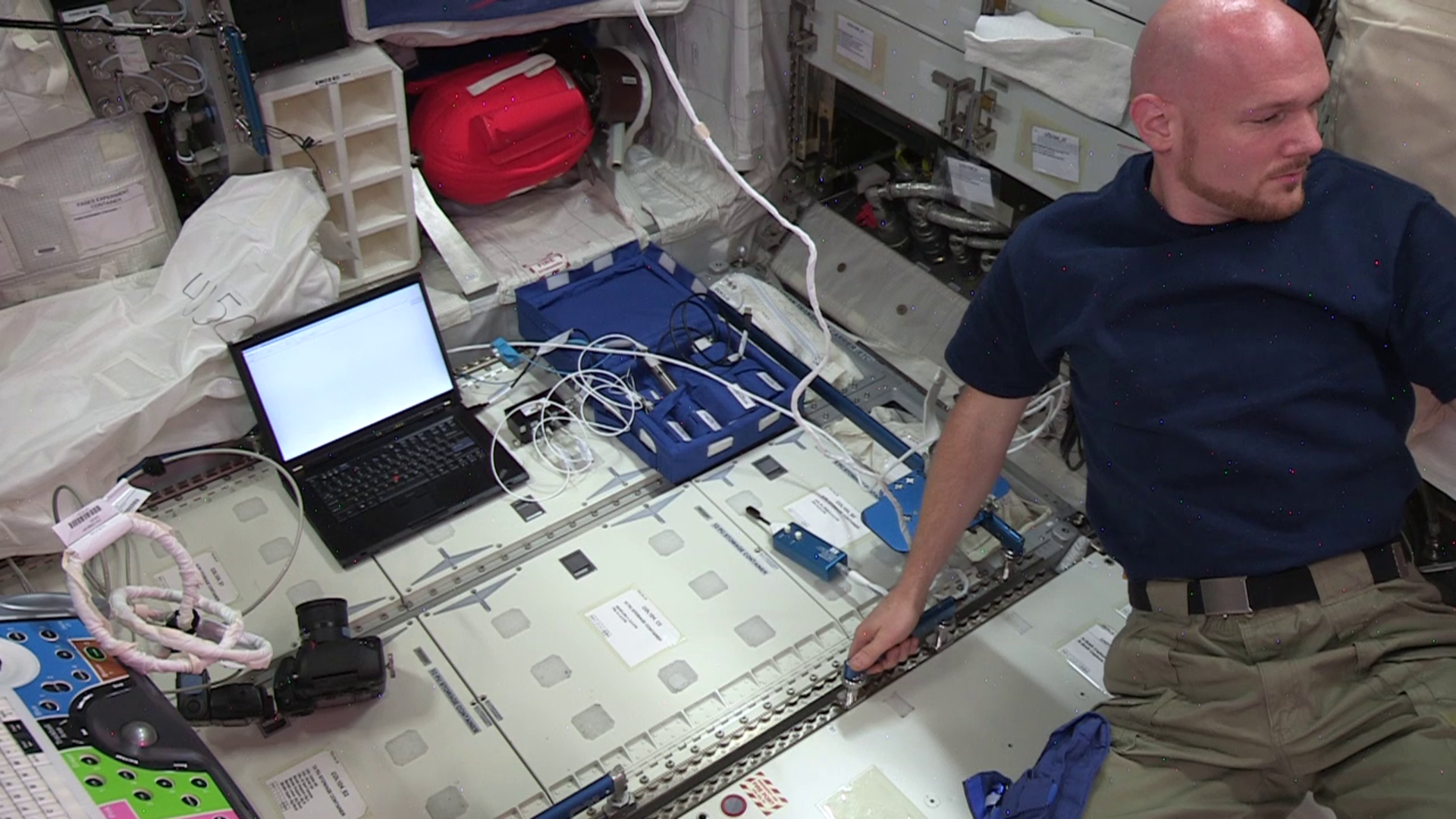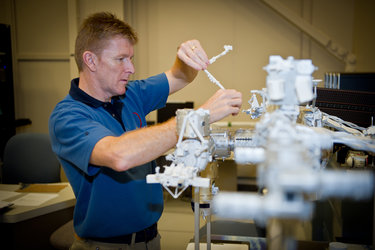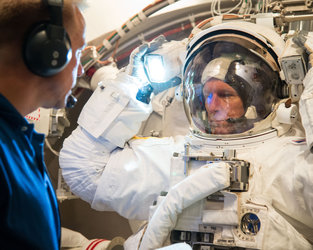Skin and bones
Cartilage
Scientists think that reduced stress on bones may be responsible for the progressive cartilage loss seen in long-term space residents. MRI scans of Tim’s knees will be taken before and after his stay in orbit. The results of this experiment are expected to help develop technologies to counteract bone loss for space travellers and bedridden patients on Earth.
Early Detection of Osteoporosis in Space

This experiment will look at changes in bone structure before and after a spaceflight by studying markers in blood and urine, as well as through a tomography scan. For this experiment, astronauts follow a strict diet during the data collection stage.
All astronauts lose up to 1% of their bone mass each month in space, similar to osteoporosis. Obviously, this is worrying for longer missions to far-away planets or celestial bodies. Researchers are interested to find out if they can detect the changes quickly and also when the changes occur. This research will help detect osteoporosis on Earth, a disease that most people over 55 suffer from to some degree.
Skin-B
Our skin protects us, regulates our temperature and helps us to feel objects. As we grow older, our skin becomes more fragile and takes longer to heal from injuries. Astronauts lose more skin cells and age faster during spaceflight. A common complaint of astronauts is cracking skin and rashes or itchiness.
This experiment is the first research into skin in space, collecting data on skin structure, oxygenation, hydration and elasticity. The goal is to develop a computer model of how skin ages. Results on Tim’s skin will improve the model and could contribute to helping protect people’s skin on Earth as well as in space.


Access the video







 Tim Peake on Facebook
Tim Peake on Facebook Tim Peake on YouTube
Tim Peake on YouTube Tim Peake on Flickr
Tim Peake on Flickr